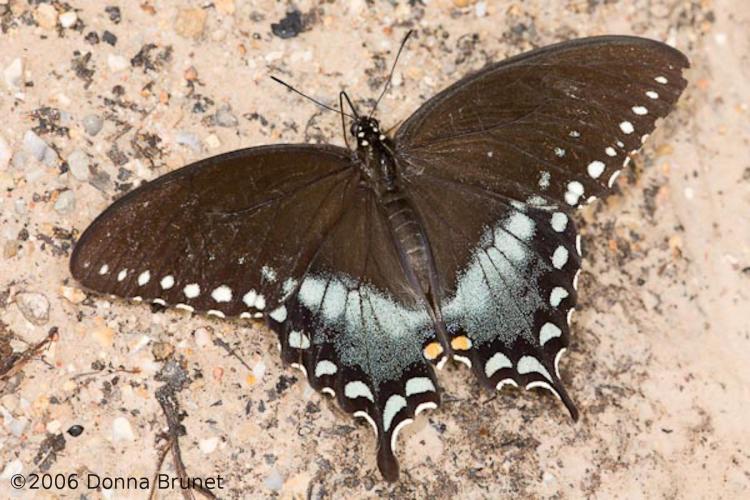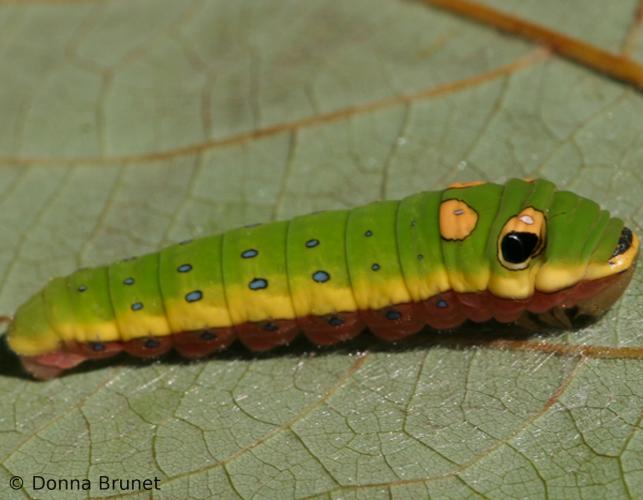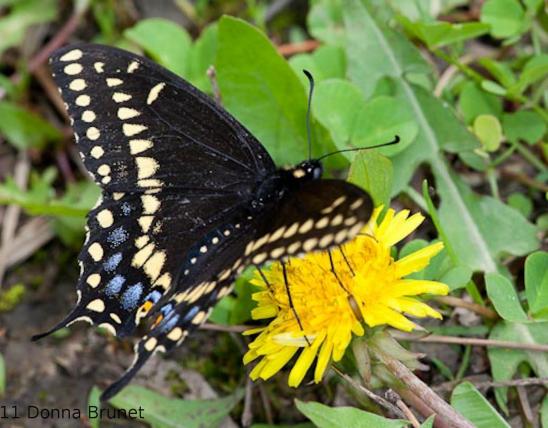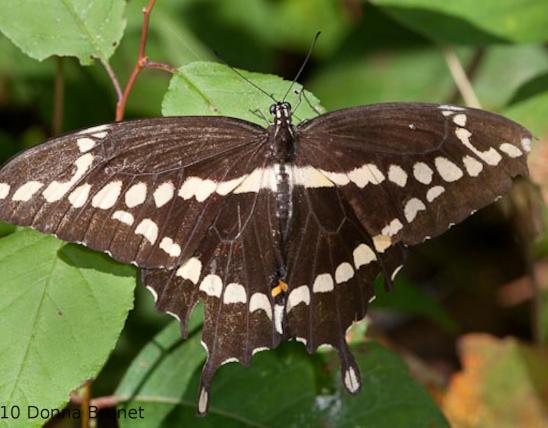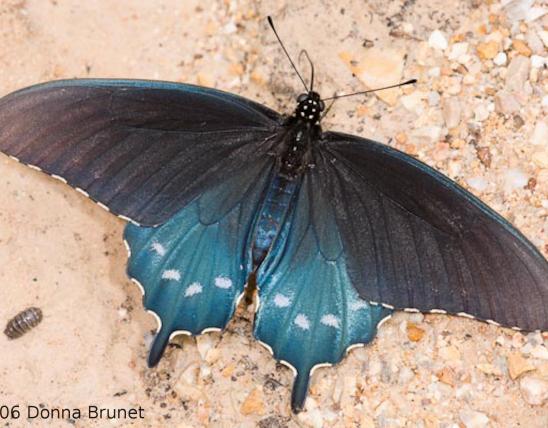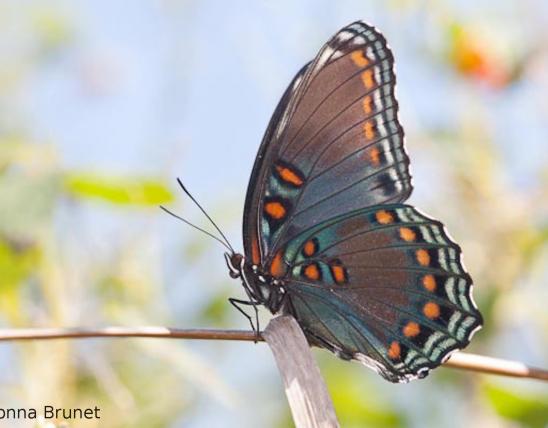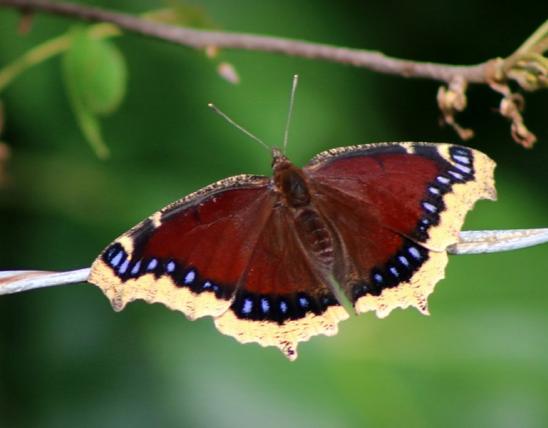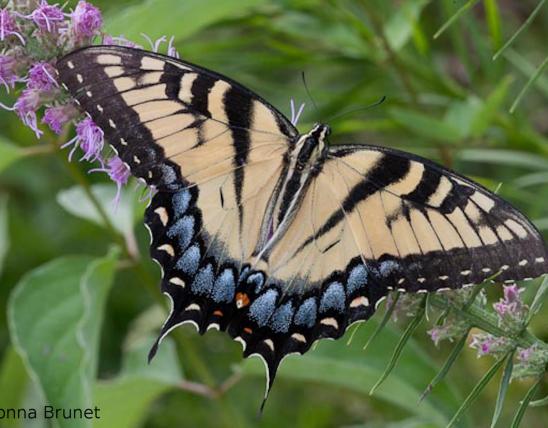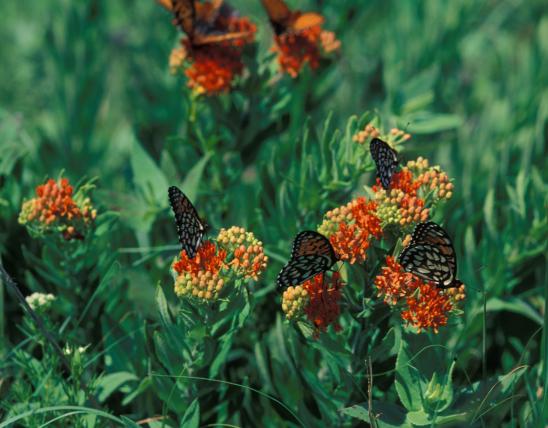
Spicebush swallowtails are large black butterflies with iridescent blue (females) or green (males) on the hindwings. There are usually light spots near the edge of the forewings, and orange spots on the underside of the hindwings. Swallowtails have a tail-like extension from the rear edge of each hindwing, reminiscent of the tails of swallows.
Caterpillars are bright green or sometimes yellow, smooth, with a prominent pair of black and yellow eyespots on a hump behind the actual head, and two more yellow spots behind those. Young caterpillars are shiny olive-green and white and resemble bird droppings.
Wingspan: 2½–4 inches.

Breeding resident in the Ozarks, but rare in other areas.
Habitat and Conservation
Strongly attracted to moist places and flowers, especially butterfly weed. It is more at home in forested areas but wanders widely in search of nectar sources. Swallowtail caterpillars have Y-shaped, orangish, retractable organs behind their heads for protection: when disturbed, the caterpillar suddenly extends this organ, which surprises predators and emits a foul-smelling chemical.
Food
Larvae eat sassafras and spicebush, making a folded-over “tent” out of a leaf of the food plant to conceal itself when not feeding. Adults drink nectar from many flowers, but especially from butterfly weed. They also take moisture and other nutrients from puddles and wet ground.
Status
Common breeding resident.
Life Cycle
There are 3 broods, with adults flying from April into October. Larvae hide in shelters made by spinning silk onto the surface of a leaf of the food plant, causing the leaf to curl around them.
Human Connections
In addition to their considerable aesthetic value, butterflies pollinate plants, many of which have commercial importance. Additionally, because butterflies are sensitive to toxins and disturbance, they are good indicators of the overall status of ecosystems.
Ecosystem Connections
The caterpillars are herbivores that graze on vegetation. The adults serve a role in pollination. All stages provide food for predators.
